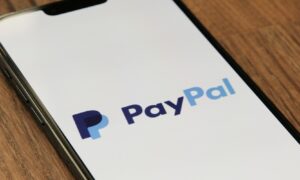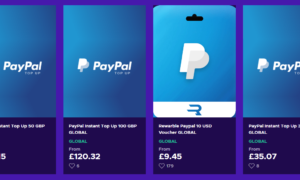In an era where smartphones have seamlessly merged into our daily lives and convenience reigns supreme, the financial landscape has experienced a monumental shift through the rise of contactless payment apps. The days of searching for loose change or sifting through wallets for credit cards are long gone; a simple tap on a phone screen now completes transactions effortlessly. Yet, among the plethora of options available, which contactless payment app stands above the rest? Join us as we embark on a journey into the captivating universe of digital wallets, traversing from Starbucks to Apple Pay and unearthing the preeminent and user-centric apps reshaping modern payment dynamics.
Introduction
Various contactless payment apps grace the market today, with prominent names including Apple Pay, Android Pay, and Samsung Pay. These apps empower users to securely store their credit and debit card details on their devices, streamlining payments with a swift tap. Beyond in-store transactions, many of these apps facilitate online purchases and fund transfers to friends and family.
While the adoption of contactless payments is on the rise, some individuals remain cautious due to concerns regarding data security or a lack of understanding. Nonetheless, as more businesses integrate contactless payment solutions, this technology is poised to become increasingly mainstream.
Popular Contactless Payment Apps
As of 2019, a selection of popular contactless payment apps, including Apple Pay, Google Pay, and Samsung Pay, have captured the market. Each app empowers users to execute payments by simply holding their device close to a contactless reader.
Apple Pay, with over a billion transactions processed in 2018, leads the pack as the most widely embraced contactless payment app. Google Pay follows suit, processing over 24 million transactions in the same year. Samsung Pay claims the third spot, boasting over 10 million transactions.
All three apps are compatible with iOS and Android devices, and Apple Pay extends its capabilities to select Mac computers and the Apple Watch. Google Pay can be utilized on a range of Android Wear watches, while Samsung Pay extends its reach to select Galaxy smartphones and smartwatches.
Apple Pay
At the forefront of contactless payment apps stands Apple Pay, which empowers users to initiate payments using their iPhone or Apple Watch. With this app, in-store purchases can be made effortlessly with an iPhone or Apple Watch, while app and website payments are equally streamlined. Furthermore, Apple Pay facilitates fund transfers within the Messages app, enriching user experiences. To set up Apple Pay, integrating a credit or debit card within the iPhone’s Wallet app is essential.
Google Pay
Google Pay, a digital wallet and mobile payment service by Google, revolutionizes in-app and tap-to-pay transactions on Android devices. Catering to major credit and debit cards, Google Pay’s reach extends to select transit systems and accommodates gift cards and loyalty cards within its interface. Compatibility spans Android devices operating on Lollipop 5.0 or higher, along with iOS devices running iOS 8.1 or higher.
Venmo
In recent years, Venmo has surged in popularity as a contactless payment app, streamlining money transfers with a few taps on smartphones. This app is an ideal solution for sidestepping cash and checks, facilitating bill splitting among friends, covering rent and utilities, and even contributing to charitable causes. Notably, Venmo’s services are devoid of charges for sending or receiving money, amplifying their allure.
PayPal
PayPal, an enduring favorite, ranks among the top contactless payment apps. This versatile platform enables money transfers, online purchases, and in-store transactions. Creating an account and linking bank details or credit cards are the prerequisites for engaging with PayPal. Once established, a world of secure online and in-person shopping opens up.
Starbucks App
The Starbucks app emerges as a celebrated contactless payment tool, allowing patrons to settle purchases using their smartphones. Additionally, the app facilitates loyalty point tracking, account balance checks, and store location searches. Starbucks’ app embodies the essence of seamless payment experiences.
Advantages for Consumers and Businesses
The proliferation of contactless payments in recent times has heralded heightened interest from both businesses and consumers, intrigued by the convenience this method offers. Through contactless payments, transactions are expedited by merely waving cards or phones near readers, negating the need for traditional card insertion or swiping. This expeditious process benefits busy individuals and enterprises alike.
The advantages of contactless payments are multifaceted, benefiting consumers with rapid transactions, enhanced security, and unparalleled convenience. For businesses, the perks include streamlined processing, reduced costs, and heightened customer satisfaction.
With market leaders such as Apple Pay, Samsung Pay, and Google Pay leading the charge, the global adoption of contactless payments continues to escalate. As more businesses embrace these solutions, the trajectory points toward a sustained growth pattern in the years to come.
Mitigating Security Concerns in Contactless Payments
As the world gravitates toward a cashless society, contactless payments have ascended to prominence. However, apprehensions regarding security have accompanied this transition. To safeguard oneself while utilizing contactless payments, consider these precautions:
- Safeguard Your Contactless Card: Prevent unauthorized transactions by securing your card to evade loss or theft.
- Vigilantly Monitor Account activity. Regularly review your account statements to detect any irregularities. Alert your financial institution about suspicious activity promptly.
- Opt for Secure Wi-Fi Connections: When conducting online contactless payments, prioritize secure Wi-Fi connections, steering clear of public hotspots that might compromise data security.
- Don’t Store PINs on devices. Avoid saving PINs on phones or devices, as unauthorized access could potentially lead to illicit transactions. Commit your PIN to memory instead.
Conclusion
The realm of contactless payment apps, encompassing Starbucks, Apple Pay, Venmo, and beyond, encapsulates diverse features catering to varied user preferences. Whether one seeks expedient coffee transactions or a secure platform for international money transfers, a suitable app awaits exploration. Embrace these innovative contactless payment solutions today, epitomizing a harmonious amalgamation of technology, convenience, and financial dexterity.



































